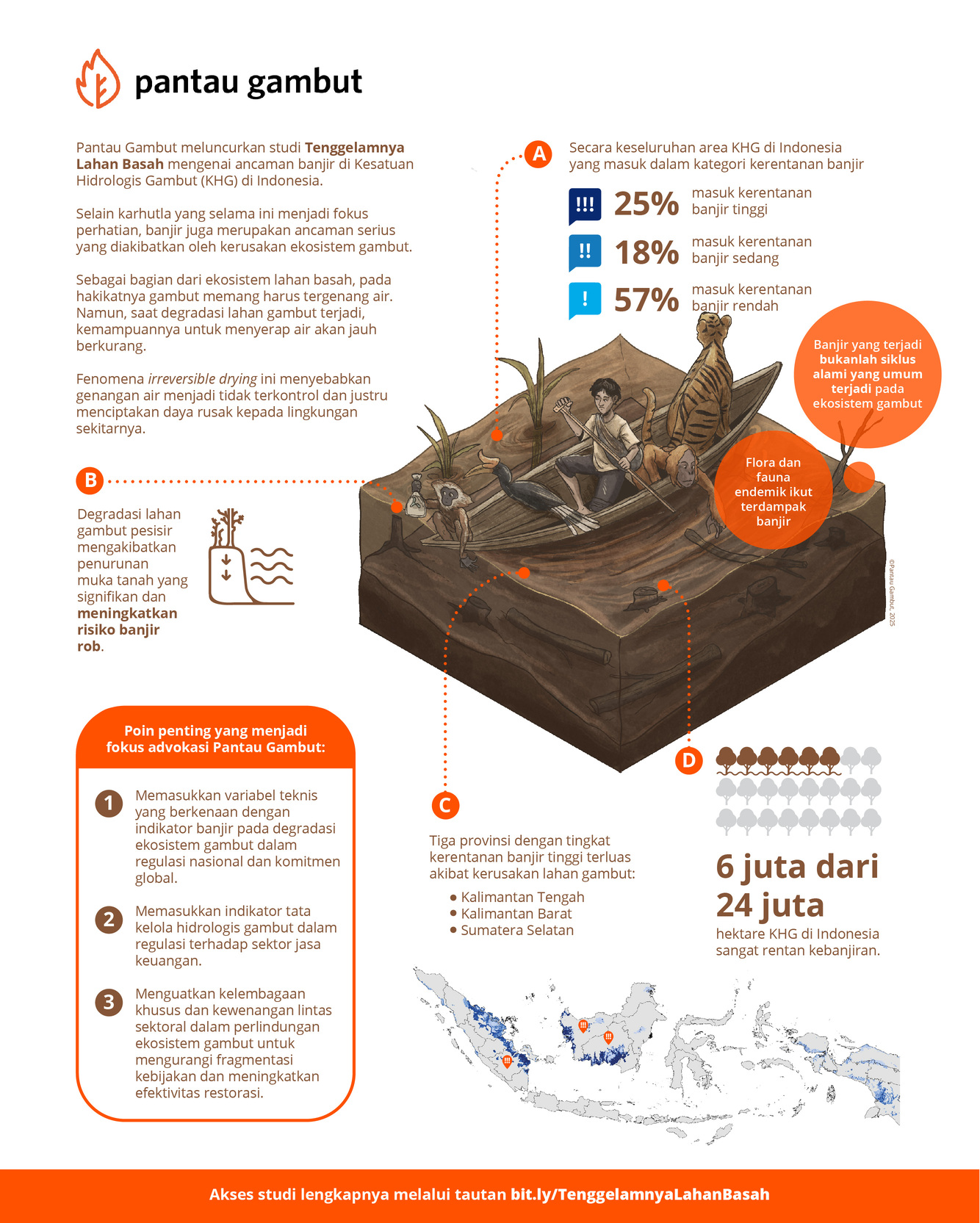The Launches of the Drowned Peatland Research
By Juma Maulana, Agiel Prakoso, Wahyu Perdana, Abil Salsabila, Fiqri Abdi, Yoga Aprillianno, Iola AbasThe Launches of the Drowned Peatland Research

As part of a wetland ecosystem, peatlands are inherently meant to be waterlogged. However, when peatland degradation occurs, their ability to absorb water is significantly reduced. This phenomenon of irreversible drying causes waterlogging to become uncontrolled runoff, which in turn creates destructive forces on the surrounding environment.
Wahyu Perdana, Advocacy, Campaign, and Communication Manager of Pantau Gambut, explains, "The floods that occur are not a common natural cycle in peatland ecosystems. These floods are caused by peatland degradation due to inappropriate land use for peatland ecosystem functions." Both humans and the existing biodiversity, all living in this ecosystem, are affected.
Provinces that are frequently affected by forest and land fires (karhutla) are also on the list of regions with flood vulnerability. Central Kalimantan, West Kalimantan, and South Sumatra are the top three regions with the most extensive flood vulnerability. In total, at least 25% of Peat Hydrological Units (KHG) in Indonesia experience high flood vulnerability, followed by 18% with moderate vulnerability, and 57% with low vulnerability.

The affected areas are not limited to regions with inland peatlands. The destruction of peatlands also causes significant land subsidence in coastal areas. Peatlands, which once served as a natural barrier against seawater intrusion, now exacerbate the problem of tidal flooding. In addition to the increased risk of flooding, freshwater reserves are also diminishing due to seawater seepage into groundwater (intrusion).
There are three key points that are the focus of Pantau Gambut's advocacy:
- Including technical variables related to flood indicators in the degradation of peatland ecosystems as an improvement to Government Regulation No. 57 of 2016 in conjunction with Government Regulation No. 71 of 2014 concerning the Protection and Management of Peatland 1 Ecosystems. These technical variables are important not only in national regulations but also in global commitments.
- Incorporating peatland hydrological governance indicators into regulations for the financial services sector.
- Strengthening special institutions and cross-sectoral authority in the protection of peatland ecosystems to reduce policy fragmentation and increase restoration effectiveness. This is because peatland ecosystems are not limited to administrative boundaries but are managed based on Peatland Hydrological Units (KHG)."



